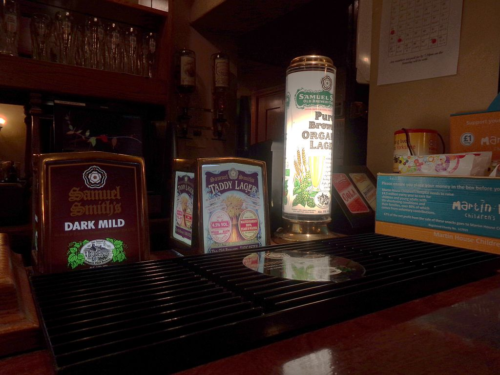
Yorkshire Flags will be waving proudly on the first of August 2009. I hope we can see them for the rain and drizzle that typifies our summer so far . This picture was taken on Ilkley Moor as good a place as any (and better than most) for a Yorkshire Flag. For a fuller explanation of the ‘vexillology’, origins and heraldry behind the Yorkshire Flag look at the Yorkshire Riding Society
- Buy Yorkshire flag at Amazon.co.uk

York stone makes the best Yorkshire Flags but they are a bit heavy to fly. These stones look like they have survived many a long year up on a moorland track above Windhill.
Our flagstones are now so popular they are also supplied from India (I think not in reality unless the Raj left a quarry name Yorkshire in one of the provinces).
Now for the biggest Yorkshire Flag
In the County Cricket Championship: Division One Table Yorkshire are currently 8th without a win in 2009. The headline in the Yorkshire Post could be ‘Yorkshire Flags’ every time we get a run chase or a tight finish. As long as we are still in Division One when the final flag is waved I suppose we will just have to stomach it.
Flagcrackers

The Flag Crackers of Craven are a Border Morris Set the practice venue is Farnhill Community Hall, at Farnhill near Kildwick – practice 8-10 pm every Wednesday. After all that practice and the fact that they will be 21 years old this October means the know what’s what when it comes to dancing on flags. Keep your eye out for a local performance this Autumn.
Mini Yorkshire Flags

Mini Yorkshire flags for desktop










 This public toilet in Lofthouse, Nidderdale is a grade II listed building. In fact it hardly looks like a public toilet but you can walk around the stone entrance and enjoy the delights of a grade II listed toilet. The toilet is even nicely decorated with flowers around the edge.
This public toilet in Lofthouse, Nidderdale is a grade II listed building. In fact it hardly looks like a public toilet but you can walk around the stone entrance and enjoy the delights of a grade II listed toilet. The toilet is even nicely decorated with flowers around the edge.





